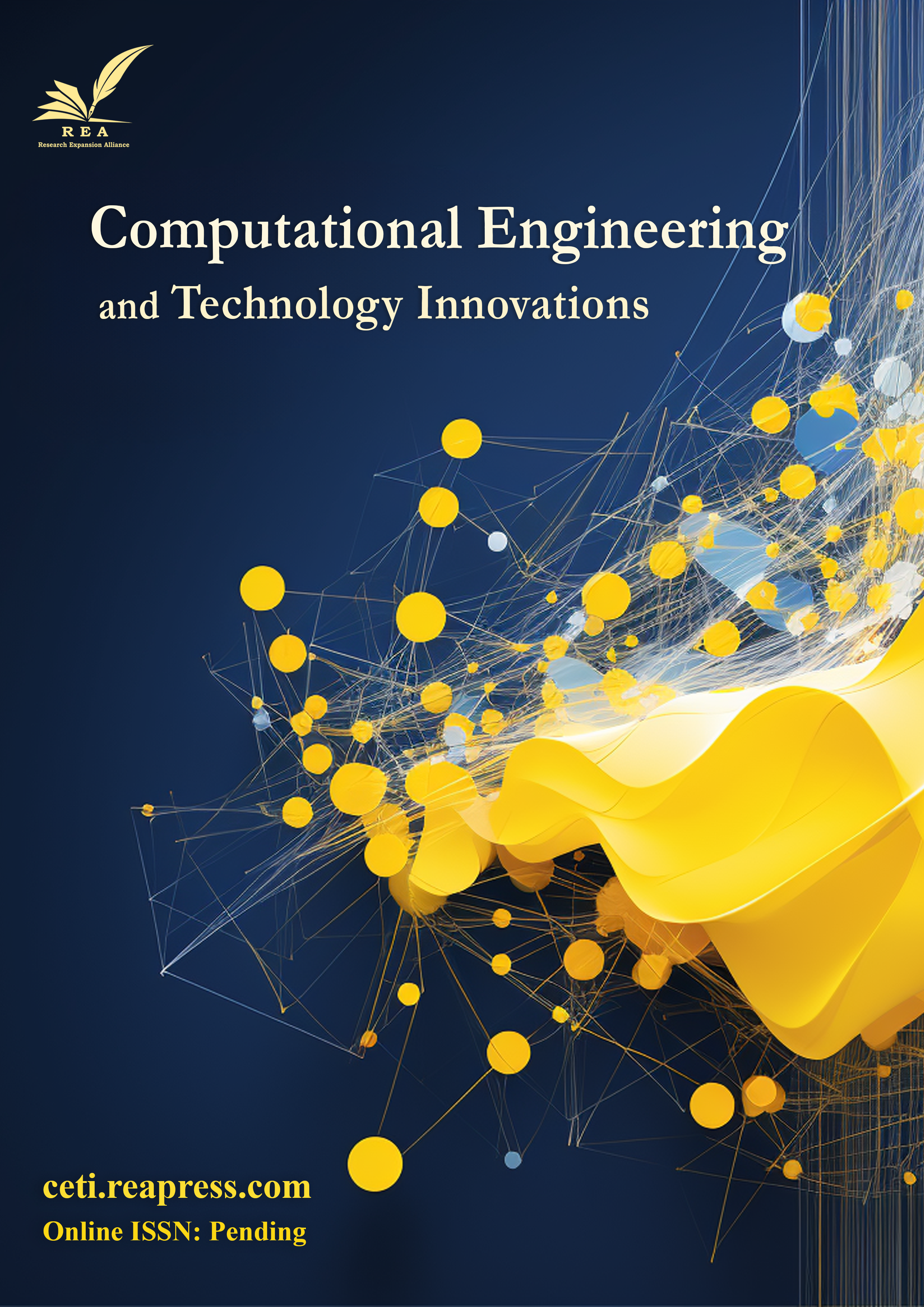The Investigation and Analysis of Line Junction Detection in Biomedical Images
Abstract
Line junction detection plays a vitaltask in the segmentation of biomedical images in various applications such as liver blood vessel detection, diabetic retinopathy, neuron reconstruction studies, etc. Previous line junction techniques hugely depend upon skeletonization and image segmentation. In this paper, we present line junction detection based on three kinds of filters such as Gaussian filter, directional filter, Gabor filter,and Histogram of Oriented Gradient (HOG) employed for the line junction score measurement, ridge forks and branches detection, ridge point detection and junction strength detection respectively. We have conducted extensive experimentation on the DRIVE retinal fundus image database. The proposed algorithm's performance is evaluated based on qualitative and quantitative analysis, and it is observed that the proposed technique outperforms traditional approaches. It results in an averageaccuracy, precision, recall and F1-score of 96.60%, 92.50%, 94.08 and 95.40% for line junction detection on DRIVE dataset.
Keywords:
Directional filter, Gabor filter, Gaussian filter, Line detectionReferences
- [1] Rosten, E., & Drummond, T. (2005). Fusing points and lines for high performance tracking. Proceedings of the IEEE international conference on computer vision (pp. 1508–1515). IEEE. https://doi.org/10.1109/ICCV.2005.104
- [2] Rosten, E., & Drummond, T. (2006). Machine learning for high-speed corner detection. Lecture notes in computer science (including subseries lecture notes in artificial intelligence and lecture notes in bioinformatics) (pp. 430–443). Springer. https://doi.org/10.1007/11744023_34
- [3] Smith, S. M., & Brady, J. M. (1997). SUSAN-A new approach to low level image processing. International journal of computer vision, 23(1), 45–78. https://doi.org/10.1023/A:1007963824710
- [4] Harris, C., & Stephens, M. (2013). A combined corner and edge detector. Alvey vision conference, 15(50), 23.1-23.6. https://doi.org/10.5244/c.2.23
- [5] Elias, R., & Laganière, R. (2012). JUDOCA: junction detection operator based on circumferential anchors. IEEE transactions on image processing, 21(4), 2109–2118. https://doi.org/10.1109/TIP.2011.2175738
- [6] Maire, M., Arbelaez, P., Fowlkes, C., & Malik, J. (2008). Using contours to detect and localize junctions in natural images. 2008 IEEE conference on computer vision and pattern recognition (pp. 1–8). IEEE. https://doi.org/10.1109/CVPR.2008.4587420
- [7] Xia, G. S., Delon, J., & Gousseau, Y. (2014). Accurate junction detection and characterization in natural images. International journal of computer vision, 106(1), 31–56. https://doi.org/10.1007/s11263-013-0640-1
- [8] Parida, L., Geiger, D., & Hummel, R. (1998). Junctions: detection, classification, and reconstruction. IEEE transactions on pattern analysis and machine intelligence, 20(7), 687–698. https://doi.org/10.1109/34.689300
- [9] Radojević, M., Smal, I., & Meijering, E. (2016). Fuzzy-logic based detection and characterization of junctions and terminations in fluorescence microscopy images of neurons. Neuroinformatics, 14(2), 201–219. https://doi.org/10.1007/s12021-015-9287-0
- [10] Srinidhi, C. L., Rath, P., & Sivaswamy, J. (2017). A vessel keypoint detector for junction classification. 2017 IEEE 14th international symposium on biomedical imaging (ISBI 2017) (pp. 882–885). IEEE. https://doi.org/10.1109/ISBI.2017.7950657
- [11] Uslu, F., & Bharath, A. A. (2018). A multi-task network to detect junctions in retinal vasculature. Lecture notes in computer science (including subseries lecture notes in artificial intelligence and lecture notes in bioinformatics) (Vol. 11071 LNCS, pp. 92–100). Springer. https://doi.org/10.1007/978-3-030-00934-2_11
- [12] Wang, G., Lopez-Molina, C., Vidal-Diez de Ulzurrun, G., & De Baets, B. (2019). Noise-robust line detection using normalized and adaptive second-order anisotropic Gaussian kernels. Signal processing, 160, 252–262. https://doi.org/10.1016/j.sigpro.2019.02.027
- [13] Bhangale, K. B., Jadhav, K. M., & Shirke, Y. R. (2018). Robust pose invariant face recognition using DCP and LBP. International journal of management, technology and engineering, 8(9), 1026–1034. B2n.ir/a49086
- [14] Basu, M. (2002). Gaussian-based edge-detection methods-a survey. IEEE transactions on systems, man, and cybernetics, part c (applications and reviews), 32(3), 252–260. https://doi.org/10.1109/TSMCC.2002.804448
- [15] Chutatape, O., Zheng, L., & Krishnan, S. M. (1998). Retinal blood vessel detection and tracking by matched gaussian and kalman filters. Proceedings of the 20th annual international conference of the ieee engineering in medicine and biology society. vol. 20 biomedical engineering towards the year 2000 and beyond (cat. no. 98ch36286) (Vol. 6, pp. 3144–3149). IEEE. https://doi.org/10.1109/IEMBS.1998.746160
- [16] Gang, L., Chutatape, O., & Krishnan, S. M. (2002). Detection and measurement of retinal vessels in fundus images using amplitude modified second-order Gaussian filter. IEEE transactions on biomedical engineering, 49(2), 168–172. https://doi.org/10.1109/10.979356
- [17] Lu, Y. M., & Do, M. N. (2007). Multidimensional directional filter banks and surfacelets. IEEE transactions on image processing, 16(4), 918–931. https://doi.org/10.1109/TIP.2007.891785
- [18] Truc, P. T. H., Khan, M. A. U., Lee, Y. K., Lee, S., & Kim, T. S. (2009). Vessel enhancement filter using directional filter bank. Computer vision and image understanding, 113(1), 101–112. https://doi.org/10.1016/j.cviu.2008.07.009
- [19] Mehrotra, R., Namuduri, K. R., & Ranganathan, N. (1992). Gabor filter-based edge detection. Pattern recognition, 25(12), 1479–1494. https://doi.org/10.1016/0031-3203(92)90121-X
- [20] Liu, S., Niu, Z., Sun, G., & Chen, Z. (2014). Gabor filter-based edge detection: A note. Optik, 125(15), 4120–4123. https://doi.org/10.1016/j.ijleo.2014.01.102
- [21] Zhou, S., Jiang, Y., Xi, J., Gong, J., Xiong, G., & Chen, H. (2010). A novel lane detection based on geometrical model and gabor filter. 2010 IEEE intelligent vehicles symposium (pp. 59–64). IEEE. https://doi.org/10.1109/IVS.2010.5548087
- [22] Dalal, N., & Triggs, B. (2005). Histograms of oriented gradients for human detection. 2005 IEEE computer society conference on computer vision and pattern recognition (CVPR’05) (pp. 886–893). IEEE. https://doi.org/10.1109/CVPR.2005.177
- [23] Bhangale, K. B. (2014). Human body detection in static images using HOG & piecewise linear SVM. International journal of innovative research and development, 3(6), 179–184. B2n.ir/m48593
- [24] Kato, T., Relator, R., Ngouv, H., Hirohashi, Y., Takaki, O., Kakimoto, T., & Okada, K. (2015). Segmental HOG: new descriptor for glomerulus detection in kidney microscopy image. BMC bioinformatics, 16(1), 1–16. https://doi.org/10.1186/s12859-015-0739-1
- [25] Bhangale, K. B., & Mohanaprasad, K. (2020). Content based image retrieval using collaborative color, texture and shape features. International journal of innovative technology and exploring engineering, 9(3), 1466–1469. B2n.ir/b49405
- [26] Jabshetti, G. C., Biradar, M. S., & Bhangale, K. (2016). Object detection using regionlet transform. 2016 international conference on computing, analytics and security trends (CAST) (pp. 600–604). IEEE. https://doi.org/10.1109/CAST.2016.7915038
- [27] Staal, J., Abràmoff, M. D., Niemeijer, M., Viergever, M. A., & Van Ginneken, B. (2004). Ridge-based vessel segmentation in color images of the retina. IEEE transactions on medical imaging, 23(4), 501–509. https://doi.org/10.1109/TMI.2004.825627
- [28] Su, R., Sun, C., Zhang, C., & Pham, T. D. (2014). A new method for linear feature and junction enhancement in 2D images based on morphological operation, oriented anisotropic Gaussian function and Hessian information. Pattern recognition, 47(10), 3193–3208. https://doi.org/10.1016/j.patcog.2014.04.024
- [29] Zhang, H., Yang, Y., & Shen, H. (2017). Line junction detection without prior-delineation of curvilinear structure in biomedical images. IEEE access, 6, 2016–2027. https://doi.org/10.1109/ACCESS.2017.2781280


